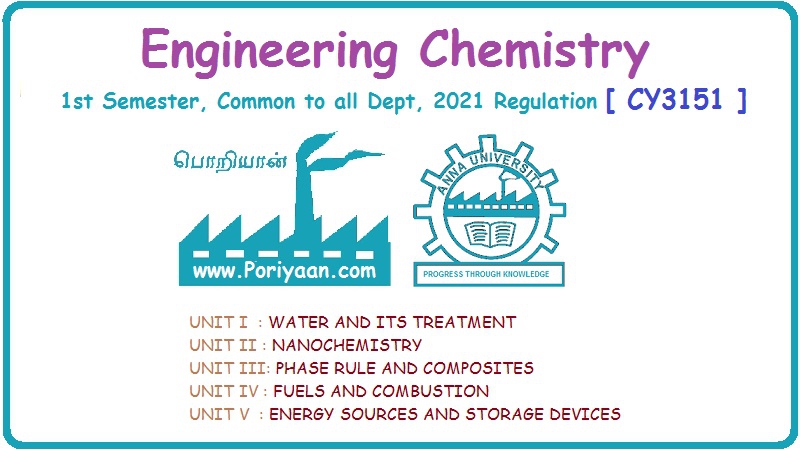Engineering Chemistry: Unit IV: b. Combustion of Fuels
Ignition Temperature (it)
It is defined as, "the lowest temperature to which the fuel must be heated, so that it starts burning smoothly”
IGNITION TEMPERATURE (IT)
It is defined as, "the lowest temperature to which the
fuel must be heated, so that it starts burning smoothly”.
Ignition temperature of coal is about 300°C. In the case of liquid
fuels, the ignition temperature is called the flash point, which ranges from
200 – 450°C. For gaseous fuels, the ignition temperature is in the order of
800°C.
1. Spontaneous Ignition Temperature (SIT)
It is defined as “the minimum temperature at which the fuel
catches fire (ignites) spontaneously without external heating":
If the ignition temperature of a fuel is low it can catch fire
very quickly. On the other hand if the ignition temperature is high it is
difficult to ignite the fuel. If the heat evolved in a system is unable to
escape, temperature of the system goes on increasing and when SIT is reached,
the system burns on its own.
EXPLOSIVE RANGE (or) LIMITS OF INFLAMMABILITY
All gaseous fuels have two limits called upper limit and lower
limit. These limits represents percentage by volume of fuel present in fuel-air
mixture.
1. Lower limit represents the smallest proportion of combustible
gas (fuel).
2. Upper limit represents the largest proportion of combustible
gas.
The range covered by these limits is termed as explosive range of
the fuels. For continuous burning the amount of fuel present in the fuel-air
mixture should not go below the lower limit or above the upper limit.
Example
The explosive range of petrol is 2-4.5. This means that when the
concentration of petrol vapour in petrol-air mixture is between 2 and 4.5 by
volume, the mixture will burn on ignition. When the concentration of petrol
vapour in petrol-air mixture is below 2% (lower limit) or above 4.5% (upper
limit) by volume, the mixture will not burn on ignition. Some of the limits of
inflammability are given in the following table. 6.1.
Table 6.1: The limits of inflammability of hydrogen, acetylene,
natural gas

Thus, explosive range (or) explosive limit is the limiting
composition of a gas-air mixture beyond which the mixture will not ignite and
continue to burn is called explosive range (or) explosive limit.
Engineering Chemistry: Unit IV: b. Combustion of Fuels : Tag: Engineering Chemistry : - Ignition Temperature (it)
Related Topics
Related Subjects
Engineering Chemistry
CY3151 1st Semester | 2021 Regulation | 1st Semester Common to all Dept 2021 Regulation
